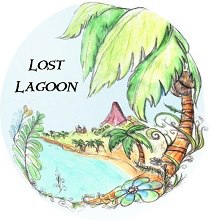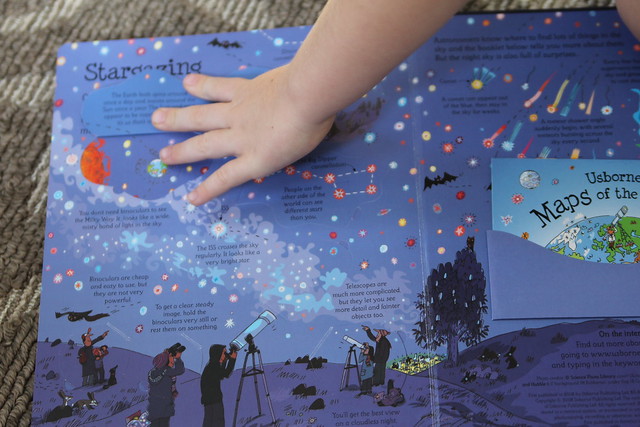How Reading Aloud Promotes Success
School aged kids spend eight times as much time out
of school as they do in school. That time out of school equals 7,200 hours a
year! I am sure you have heard the phrase that parents are children’s first
teachers. This is particularly true during the first few years of our
children’s lives before they enter school. We provide learning experiences and
promote our child’s healthy development in small and big ways each and every
day. However, even after our children enter school, parents are an integral
piece of the puzzle. Deciding what school to send our children, assisting with
homework, advocating for their specific learning needs and providing
supplemental learning experiences are just some of the ways that we promote
learning, discovery and engagement.
I wholeheartedly believe that our most important role
when it comes to our child’s education is instilling a love of learning and
reading in our children. There are certainly other pieces to reading and school
success but if a child has a curiosity about the world, a desire to read and a love
of books, the rest will follow much more easily. A recent study discovered that
a dismal 48% percent of 8 year olds don’t read at a proficient level! The good
news is that a review of 10,000 research projects found that the single most important activity required for
eventual success in reading is reading aloud to your children. As an extra
bonus one of the greatest things we can do as a parent is have a strong connection
with our children and the time we spend together reading builds this positive
bond!
Below are a few tips for how to make this
time together effective and fun!
Tips for Reading with Your Children
Read before bedtime.
Reading
as part of your bedtime routine allows you to spend time with your child
without all of the distractions of the day.
Show your children that you enjoy books and reading.
Read in front of your kids, find
things in the books you are reading to talk about with your kids, let your kids
know that you are in a book club or what your favorite books were when you were
their age.
Find books that are appropriate for your child’s age
and don’t forget to keep up with their growing levels of comprehension.
Your
local librarians (or friends) are a great resource. Tell them what kinds of
books your kids love and they can steer you in the direction of dozens more
similar books. Try non-fiction books about the subjects they are interested in.
If you find an author your child loves, introduce them to their other books.
Encourage participation.
Allow
your children to ask questions or tell you related stories. Replace words in
the story with silly rhyming words. Ask your child questions what they think
will happen next or how the characters are feeling.
Involve others.
The
more people who read to your children, the greater their comprehension will be.
Set out books when the babysitter comes over. Have grandparents over to read or
if they are far away, have them read over Skype or record a book. Have older
siblings read to their younger siblings. Make sure Dad is involved as well. Did
you know that only 15% of dads read to their children on a regular basis?
Book Baskets.
Keep
baskets of books in the kitchen, bathroom, bedrooms- everywhere! Baskets allow
young children who can’t read book titles to find and put away their favorite books
more easily which means less books on your floor!
Keep it new and fun.
Encourage
your child to pick new books. Try having them pick one book and you pick the
other. Ask them to “read” their favorite book to you or describe the pictures.
Avoid taking away reading time with you as a
consequence.
This
time together is so important and precious. Instead, try encouraging a faster
get ready routine with a bonus book or chapter reward.
Don’t try to compete with T.V.,
video games, the ipad etc. If you asked your child whether they want ice cream
or broccoli, what would they chose? Having mandatory reading time may not be
greeted with cheers but it also won’t make your child dislike reading.
Most importantly, don’t stop reading to your children even after they
can read themselves!
Why are stories and reading aloud so important? Having to learn the ABCs
first, before hearing enough stories, and before playing with words, puts the
cart before the horse, and it makes learning to read an unpleasant chore. It’s
like having to learn all the parts of a camera before being allowed to take a
picture! Experts say that a child should hear at least 1,000 words before they
are ready to start learning to read. If you are invested in helping your child
learn to read successfully, remember this order: Stories, Words and then
Letters! Nursery Rhymes are also a great way to promote literacy. In fact,
experts in literacy and child development have discovered that if children know
eight nursery rhymes by heart by the time they are four years old, are the best
readers by eight.
Whether
children make the transition to reading on their own smoothly or encounter
difficulties, learning to read has challenging and frustrating moments for most
children. When these moments happen, it is important to acknowledge your
child’s feelings. Maybe even share a time you became frustrated when learning
something new. Books with a dual reading feature where the child reads a simple
line and you read more complex text can be a great way to work to keep your
child engaged in reading. Choosing books that are the right level is extremely
important. You can use the Five Finger Test. If there are more than five words
on a page that your child does not know, then you will want to select a
different book. Bringing back books from when they were younger will build
confidence. It is okay if they have the book memorized as long as they can
point to the words they are saying.
As
children begin to read on their own, parents have a tendency to stop reading
aloud with their children. Unfortunately, when reading is only for homework and
school and no longer a piece of spending time with you, children are at risk
for a long-term dislike of reading. One of the greatest accomplishments of
Harry Potter was that it led to thousands of parents and children reading
together year after year. Finding your family’s “Harry Potter” series will
strengthen your relationship with your kids and promote a life-long love of
reading for your children.
Another
trap I see parents fall into is labeling their children as readers and non-readers.
Most labels, positive or negative, can be detrimental to children and this one
can have significant long-term effects. The child who is labeled as non or
reluctant reader is in danger of internalizing this label. Instead try saying
something like “we are struggling with finding books that my son/daughter
enjoys.” Then work with your child to find books that are fun, engaging and
match his or her interests. Reassure your child that everyone reads at a
different level and that you are there to help.
If you suspect that your child may
have a learning disability, speak to his or her teacher about your concerns. Make sure that your child has
annual eye exams or take them immediately to see someone if you suspect a
change in their vision. Most reading issues can be addressed particularly when
addressed early on but undetected or ignored can have significant consequences
on a child’s confidence in their ability.
Reading
with our children has more than just academic benefits. It helps them socially
as well. Books are a great way to talk with kids about emotions and give them
the vocabulary they need to identify and express their feelings. Children who
can put words to their emotions are better able to tolerate frustration, have
fewer fights, have less destructive behavior, are less lonely and are more
focused.
Fairy
Tales are one avenue for exploring different emotions. When children listen to
often horrifying fairy tales, they will become silent, fascinated, upset,
appalled, aghast, and they may even cry. But if they feel safe with us while
the story is being read–and indeed this is essential–they will want to relive
the drama over and over. In frightening stories, it’s someone else’s drama,
which is why frightening stories are so appealing. But the child is rescued by
the ending, when the good live happily ever after, and the bad come to a
well-deserved end.
Some
adults are squeamish about this high level of emotion, but child psychologists
say the whole point is to allow us (a) to experience troubled realities that
are different from our own, (b) to empathize, and(c) to understand cause and
effect, d) witness characters being courageous even against the odds.
If
we sanitize everything children read, how much more shocking and confusing will
the real world be when they finally have to face it? Additionally, one of the things I love best
about fairy tales is how many versions there are making it a great way to
introduce new books of increasing difficulty to a child who enjoys the same
story over and over.
Usborne
Books & More is an award winning publishing company with the following
mission:
The future
of our world depends on the education of our children. We deliver educational
excellence one book at a time. We provide economic opportunity while fostering
strong family values. We touch the lives of children for a lifetime. As an Usborne Books & More Educational
Consultant I have the privilege and opportunity to share amazing books with
families and educators through home shows, book fairs and booths. Please
let me know if you want assistance matching your child’s interests with a
selection from our incredible inventory of books. I would love to hear
about your reading challenges and successes. Just like with companies such as
Pampered Chef or Thirty-One, Usborne consultants an offer generous
opportunities for free books through home shows. I particularly love talking
with Moms Groups about literacy and parent engagement. And, if you think that
promoting literacy through Usborne Books & More sounds like a fun career,
contact me with any questions you might have.
Gail Sawchuk is a
mother of three and five year old sons, living in Broomfield, Colorado. She is
the former Director of Parenting Place in Boulder, has a Masters Degree in
Social Work and has spent more than twenty years working with children and
families in a variety of settings including day care centers and schools. As an
Usborne Books & More Educational Consultant she is available for
Educational Home Shows, Book Fairs and assistance with online book orders.
Contact Information:
720-937-8569
Main
Resource for this article: The Read-Aloud Handbook by Jim Trelease and other amazing Usborne Books & More Consultants!












